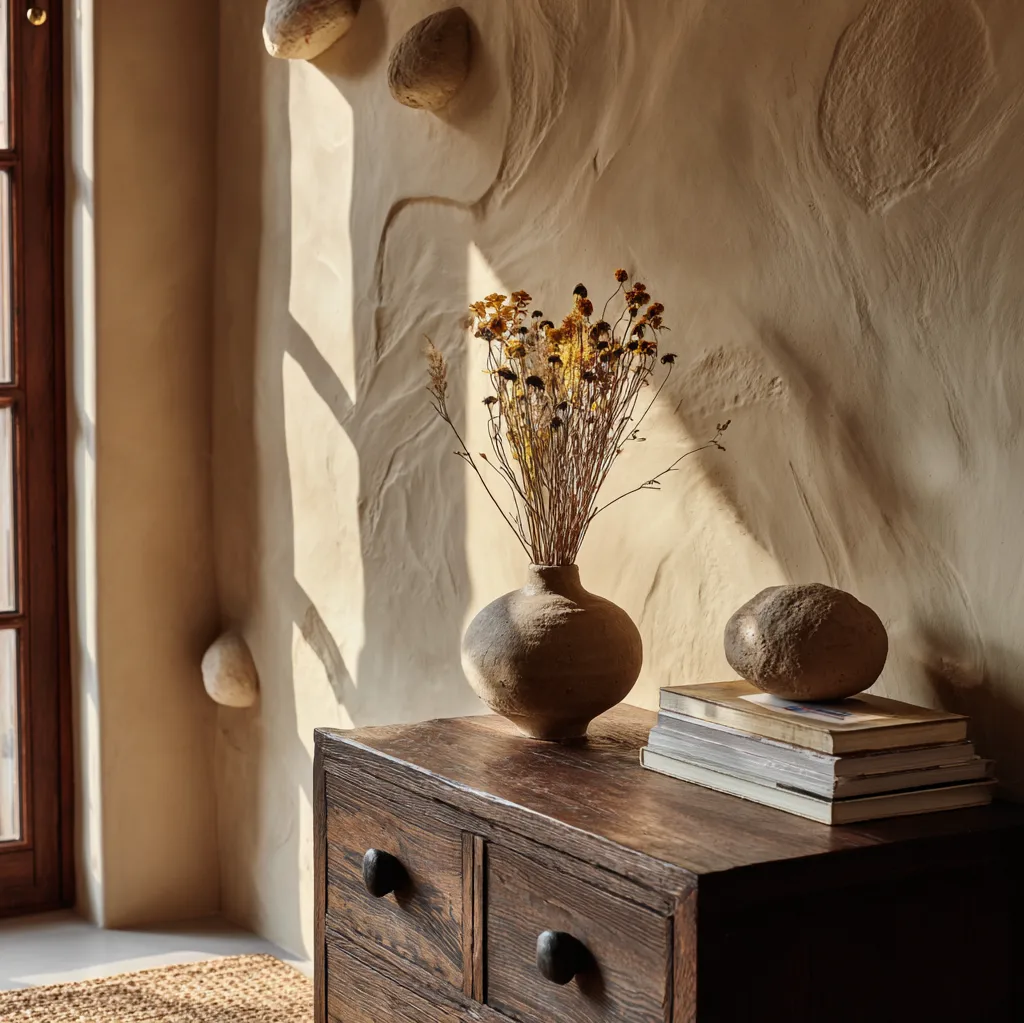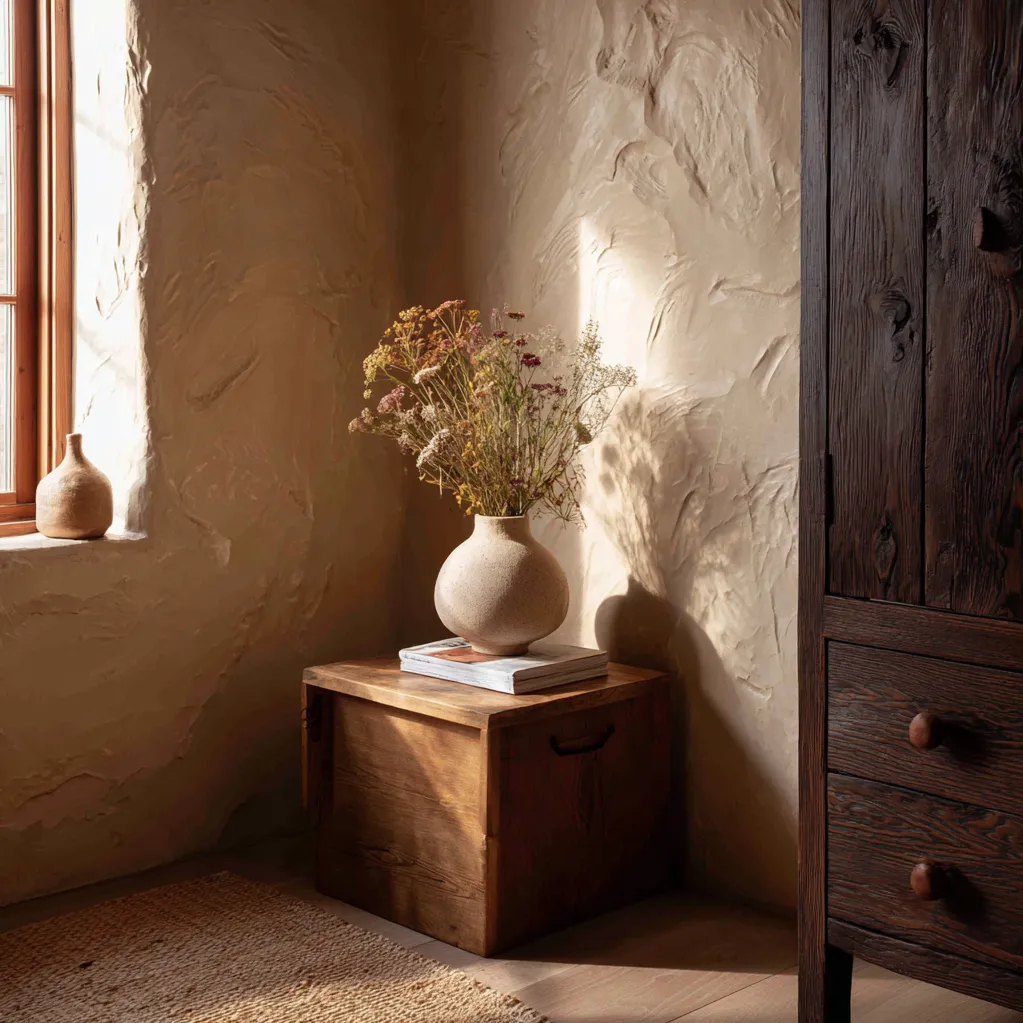
In the world of home decor, texture plays a pivotal role in creating spaces that feel inviting, dynamic, and personal. Simple clay texture ideas offer a unique opportunity to add depth and character to your walls, accessories, and furniture without breaking the bank. Clay, with its natural, earthy appeal, brings a touch of organic warmth that synthetic materials often lack. It’s versatile, easy to work with, and perfect for DIY enthusiasts looking to infuse their homes with a handmade touch. Whether you’re aiming for a rustic, modern, or bohemian style, these ideas can be adapted to suit any aesthetic. The importance of texture in interior design cannot be overstated—it enhances visual interest, improves acoustics, and can even influence mood. By embracing clay, you’re not just decorating; you’re connecting with a material that has been used for centuries in art and architecture. In this article, we’ll explore how simple clay textures can elevate your decor, providing practical tips and inspiration. With 10 innovative ideas to choose from, you’ll discover how easy it is to start projects that yield stunning results. Let’s dive into the world of clay and unlock its potential to transform your living spaces into cozy, textured havens.

Simple Clay Texture Ideas for Wall Finishes
Wall finishes are one of the most impactful ways to incorporate simple clay texture ideas into your home. Clay plaster, for instance, creates a soft, matte surface that adds depth and warmth to any room. It's made from natural clay, sand, and fibers, and can be applied with a trowel to achieve various effects—from smooth to highly textured. Start by preparing your wall: clean it thoroughly and apply a base coat if needed. Then, mix your clay plaster according to package instructions, adding water until it reaches a creamy consistency. Use a hawk and trowel to spread it evenly, working in small sections. For a rustic look, drag a comb or sponge over the surface while it's still wet to create lines or patterns. This technique not only enhances aesthetics but also improves indoor air quality, as clay is breathable and absorbs moisture. Another idea is to use clay paints, which are eco-friendly and come in a range of earthy tones. Apply them with a brush or roller, and for added texture, mix in fine sand or sawdust. These finishes are durable and easy to repair, making them ideal for high-traffic areas. For inspiration, check out this guide on sustainable home materials from The Spruce, a trusted resource for DIY projects. Remember, simple clay texture ideas like these can turn plain walls into focal points, adding character without overwhelming the space. With practice, you'll master techniques that make your home feel uniquely yours.

Simple Clay Texture Ideas for Decorative Accessories
Decorative accessories are a fantastic way to experiment with simple clay texture ideas on a smaller scale. Think handmade vases, bowls, or wall hangings that add tactile interest to shelves and tables. Air-dry clay is perfect for this, as it requires no kiln and is easy to shape. To start, knead the clay until pliable, then roll it out or mold it into your desired form. For texture, press natural objects like leaves, stones, or fabric into the surface before it dries. This creates imprints that mimic organic patterns, enhancing the rustic feel. Once dry, you can leave it natural or paint it with clay-based pigments for a cohesive look. Another idea is to create clay coasters or trivets by cutting shapes from rolled-out clay and texturing them with a fork or stamp. These accessories not only serve functional purposes but also become conversation starters. For example, a textured clay vase can hold dried flowers, adding a touch of nature to your decor. If you're new to clay work, start with simple projects like pinch pots or small sculptures. Over time, you can advance to more complex items, such as clay light fixtures or picture frames. The key is to embrace imperfections—they add charm and uniqueness. For more inspiration, visit https://wheelsofflavor.com/diy-projects, where you'll find tutorials on crafting with natural materials. Simple clay texture ideas for accessories allow you to personalize your space affordably, making it feel more curated and inviting.

Simple Clay Texture Ideas for Furniture Accents
Furniture accents provide another avenue for incorporating simple clay texture ideas into your home decor. Instead of overhauling entire pieces, focus on adding clay elements to tables, chairs, or cabinets for a subtle yet striking effect. For instance, you can create clay drawer pulls or knobs by molding air-dry or polymer clay into custom shapes. Texture them by rolling in sand or using carving tools to etch designs. Once hardened, attach them to furniture for an instant upgrade. Another approach is to apply clay inlays to tabletops or shelves. Mix clay with a binder like glue, then spread it into carved grooves or patterns on wood surfaces. Sand it smooth after drying for a seamless finish that highlights the texture. This technique works well for coffee tables or sideboards, adding a handmade touch that complements various styles, from farmhouse to contemporary. If you're feeling ambitious, consider building small clay side tables from scratch using coil or slab methods. These can be textured with imprints or left rough for an artisanal look. The durability of clay makes it suitable for furniture, especially when sealed with a protective coating. Not only do these ideas enhance visual appeal, but they also make your furniture one-of-a-kind. For beginners, start with non-structural items like decorative trays or bookends. As you gain confidence, you can tackle larger projects. Simple clay texture ideas for furniture accents are cost-effective and allow for endless creativity, turning mundane pieces into statement items that reflect your personal style.
Conclusion
In summary, simple clay texture ideas offer a versatile and affordable way to breathe new life into your home decor. From wall finishes that add depth and warmth to decorative accessories and furniture accents that infuse personality, clay proves to be a powerful tool for DIY enthusiasts. We've explored 10 amazing techniques, including clay plaster applications, textured vases, and custom furniture details, each highlighting the material's natural beauty and adaptability. Embracing these ideas not only enhances the aesthetic appeal of your spaces but also promotes sustainability, as clay is an eco-friendly resource. As you experiment, remember that the imperfections in handmade textures are what make them unique and charming. Looking ahead, the trend towards organic and personalized home design is set to grow, making clay an even more relevant choice. Consider combining clay with other natural elements like wood or stone for a cohesive look. For actionable insight, start small with a simple project, such as texturing a clay planter, and gradually build your skills. The future of home decor lies in creativity and sustainability, and simple clay textures are a perfect way to contribute to that movement. By integrating these ideas, you'll create a home that feels inviting, authentic, and truly your own.
Frequently Asked Questions
Q: What types of clay are best for simple texture projects?
For simple texture projects, air-dry clay and polymer clay are excellent choices. Air-dry clay is ideal for beginners as it hardens without baking and is easy to shape and texture. Polymer clay requires oven baking but offers durability and a wider range of colors. Natural clay or clay plaster is best for wall finishes, as it provides a breathable, eco-friendly option. Always choose clays that are non-toxic and suited to your project's scale—lighter clays for accessories and heavier mixes for structural elements.
Q: How can I ensure my clay textures last long without cracking?
To prevent cracking, ensure proper drying and curing. For air-dry clay, let it dry slowly in a cool, shaded area—avoid direct heat or sunlight. Knead the clay thoroughly to remove air bubbles before shaping. For added strength, mix in a small amount of glue or acrylic medium. Once dry, seal the surface with a clear varnish or sealant, especially for items exposed to moisture or handling. For wall applications, apply clay plaster in thin layers and allow each to dry completely. Regular maintenance, like dusting gently, can also extend the life of your textures.
Q: Can I use simple clay texture ideas in humid areas like bathrooms?
Yes, but with precautions. Clay is porous and can absorb moisture, so it's essential to seal it properly with a waterproof sealant if used in humid areas like bathrooms. Opt for clay plasters or accessories that are specifically formulated for high-moisture environments, and avoid direct water exposure. For example, textured clay backsplashes or decorative pieces can work if installed away from splash zones and maintained regularly. Always test a small area first to ensure durability, and consider combining clay with water-resistant materials for best results.

